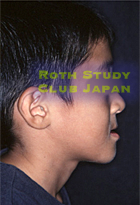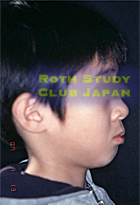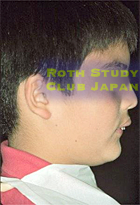Decide when to do what
Early treatment ? what is the significance?
It is often said that tooth extraction can be avoided if treatment is started early. It is not impossible to align all erupted teeth with modern orthodontic appliances. The only goal here is to align all teeth. There is no consideration whatsoever to facial esthetics, harmony between the joints and tooth fit, periodontal harmony, functional occlusion or dental esthetics. This would likely lead to a poor prognosis. What happens afterwards is more important. Indications for early treatment include 1) increasing difficulty of treatment with time and 2) increasing stress on chewing function, particularly the TMJs, if left untreated. Examples of these are shown below:
Unstable bite
In some patients, the transverse dimensions of the upper and lower posterior segments are uncoordinated, the upper and lower midlines are off, and the mandible is deviated to one side in the frontal view. One cause of this problem is the teeth that are tipped lingually (towards the tongue) or buccally (towards the cheek). Another cause is a discrepancy in size between the upper and lower arches, causing the mandible to deviate to one side upon closure. Recent data also suggests mandibular deviation towards the side with disc displacement. When these problems exist, treatment is initiated a little early to reduce stress on the TMJs and prevent underdevelopment of the mandible.

The upper arch is narrow, causing the mandible to shift to the right upon biting.


The upper arch was broadened. The mandible no longer shifts to the right. It is important to stabilize the jaw with a splint in this process.

Underdevelopment of the maxilla
The mandible is forced into anterior crossbite because of the position of the anterior teeth. The patient with this dental condition has to shift the jaw to bring the teeth together, increasing stress on the TMJs. It also inhibits maxillary growth. The maxilla is through growing earlier than the mandible. This necessitates early intervention since treatment at a later stage would make the guidance of maxillary growth difficult. This type of treatment temporarily causes instability of jaw position, so it is necessary to avoid overloading of the TMJs with the use of a splint.

The maxilla is underdeveloped. The upper anterior teeth are in the way and the mandible has to be brought forward to bring the teeth together.


The maxilla was protracted (pulled forward) while protecting the joints with a splint on the lower arch. His lip profile was improved to a full child-like profile.

Open bite
Open bite may cause wear of the posterior teeth and parafunction. It needs treatment before the joints become overstressed. The case below had minor disc displacement detected. A splint was therefore used before orthodontic treatment to stabilize the joints. An orthodontic appliance was worn for a short time and the upper first molars were intruded (moved up vertically) with a high-pull headgear and a palatal bar to close the open bite.
Before treatment

After Phase I treatment

Extreme overjet
Severely protruded upper anterior teeth are susceptible to trauma. Since many of these cases have discrepancies in the joints, excessive stress is exerted on the joint structures during function. The case below was treated with a high-pull headgear by intruding the upper first molars up and back (never extrude down and back). At the same time, the upper anterior teeth were retracted with the simplest possible appliance. Class II relationship was corrected by controlling maxillary growth (particularly vertical growth) and utilizing mandibular growth.

Before treatment


After Phase I treatment

Phase I treatment should be finished in about a year. It should not be prolonged. Problems may be solved with Phase I treatment, eliminating the need for Phase II treatment only in a small number of cases. Phase II treatment needs to be completed at an appropriate timing based on the orthodontist's judgment.
Select optimal mechanics to achieve the goals
Only when we have a concrete treatment plan, we can execute treatment efficiently and inform the patient about what types of cooperation are needed in treatment. Estimated time and difficulty of treatment can also be communicated to the patient before the start of treatment.
Treatment is initiated once all problems have been identified. Then, there will be no treatment interruptions or changes in treatment plan. Otherwise, unexpected problems would arise in the middle of treatment. Knowing the problems greatly increases treatment efficiency. This is analogous to crossing a river. It makes a great deal of difference if you cross a river knowing its depth and flow rate. Without the knowledge, you may spend much more time and effort due to unexpectedly deep or fast-flowing water, or even worse, you may have to pull back without crossing the river.
